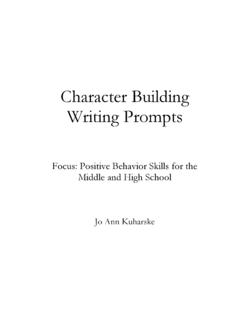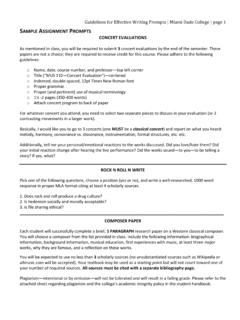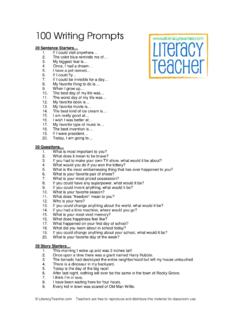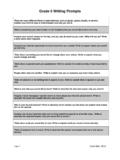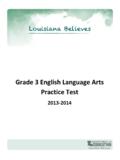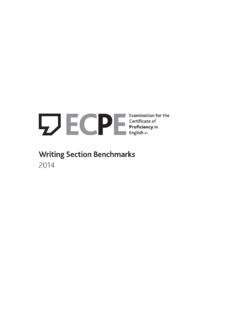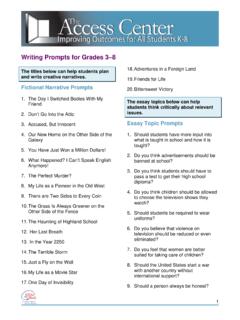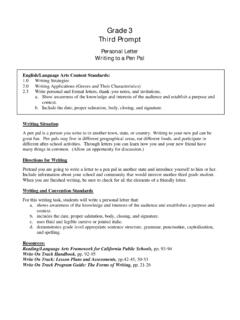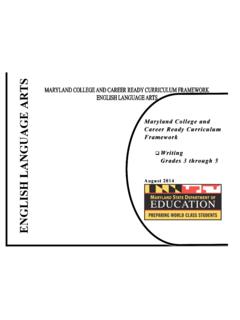Transcription of Grades 3-5 Informative/Expository Writing - VDOE
1 Grades 3-5 Informative/Expository Writing Strand: Writing SOL Materials Children s magazines with nonfiction articles Interactive white board or other available technology Blank paper Index cards Paper clips Lesson 1. Choose a few well-written and interesting nonfiction magazine articles to read to the students as models of good Informative/Expository Writing . Display the articles on an interactive white board or available technology, or provide a copy for each student. 2. Explain how these articles convey ideas and information clearly pointing out organizational techniques such as clear, interesting topic sentences; well-developed paragraphs; specific vocabulary; and use of facts, definitions, opinions, details, and information.
2 Explain how to identify the intended audience by noticing how the techniques employed in the article cater to the intended audience. 3. Explain that the students will be Writing an article for their peers. Students will create an expert list , a list of topics about which they consider themselves to be an expert. 4. Begin modeling how to write an expert list for students to see. Use think aloud strategies to model how to develop the list. The students will begin their own expert lists and share topic ideas. 5. Model choosing a topic you feel confident in Writing that will also be of interest to the students in the class. The students will choose their own topic using the same criteria. 6. Write facts about the chosen topic on blank paper.
3 One fact will be written on each piece of paper. 7. Give each student a few index cards and direct them to write only one fact they know about their chosen topic on each card. 8. Begin to organize the facts by sorting similar facts together. The students may begin to notice similarities among the facts as you help sort them. Tell the students this is how they will organize their nonfiction piece, either into sentences or paragraphs. The students will then organize their own index cards and clip them together by similarities. The students will share how they organized their facts. 9. Use think aloud strategies about the facts and use them to create an interesting lead (or topic) sentence. Refer back to the nonfiction articles for examples of topic sentences.
4 10. Students will brainstorm at least two different leads for their informative article and share with the class. For their article, they should choose the lead that best explains the central idea of their piece. 11. Model how to turn the facts into cohesive sentences and paragraphs using transition words (such as for example , finally , etc), descriptive vocabulary, voice. 12. Explain that well-developed Writing takes a lot of thought. The students will then write their own paragraphs using the facts they organized. 13. At this point, the students will be ready to write their conclusion, regardless of whether it is a sentence or a paragraph. Refer back to the nonfiction articles to examine how those authors concluded their articles.
5 Explain that the conclusion should refer back to the topic and restate the central idea. 14. Create a conclusion for your own article. The students should then write their own conclusion. 15. Conclude with asking the following questions for students to reflect upon their Writing : Is the article clear and easy for the reader to understand? Is there a specific topic identified? Are supporting details, facts, and definitions used? Is specific vocabulary used? Does the conclusion refer back to the topic s central idea?










